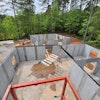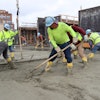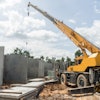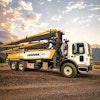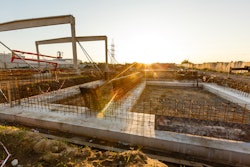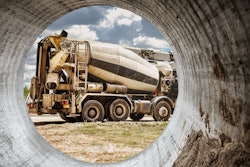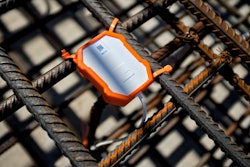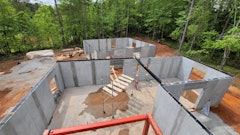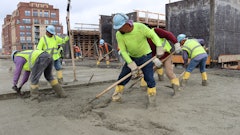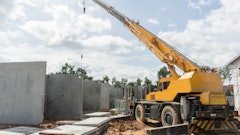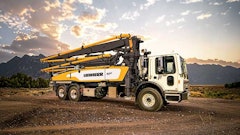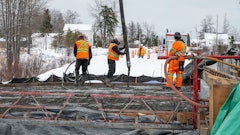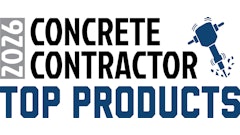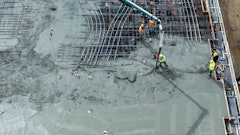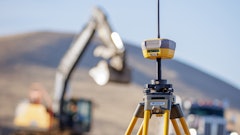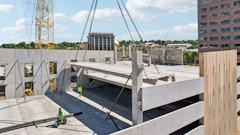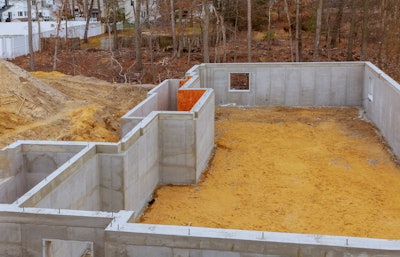
Brand Fredricks, senior manager of product marketing at Milwaukee Tool, shares his insight into the state of the concrete industry and the challenges contractors are managing daily. Concrete Contractor connected with Fredricks over email in June 2025.
Q. What have been the biggest challenges for concrete contractors so far in 2025?
 Brand FredricksMilwaukee Tool
Brand FredricksMilwaukee Tool
At Milwaukee Tool, we’ve worked closely with concrete professionals to understand these evolving needs. Our battery-powered equipment platforms are designed to reduce the time and cost associated with fuel, maintenance, and repairs — while delivering the performance required for demanding concrete applications. These solutions are already making a measurable impact by helping contractors stay productive and competitive in a challenging environment.
Q. What segments of concrete construction have seen growth in 2025?
We’ve seen consistent growth in battery-powered equipment adoption across all major concrete segments. As confidence grows in the performance and runtime of battery-powered solutions, more contractors are making the switch from gas-powered tools.
This shift is being driven by several key factors: the elimination of emissions, reduced noise levels, and the simplicity of push-button starts. These benefits are especially valuable in enclosed or trench environments, where health and safety compliance are even more critical to the well-being of workers. While some segments may see varying rates of adoption, the overall trend is clear — contractors are embracing battery-powered solutions that help them work safer and more efficiently.
Q. How do you think this will track going into 2026?
We expect the momentum behind battery-powered concrete equipment to continue accelerating into 2026. As more contractors experience the reliability and safety benefits firsthand, adoption will expand beyond early adopters and into broader segments of the industry.
This growth will likely outpace the general concrete market, driven by the increasing need to eliminate jobsite emissions, equipment downtime, and simplify equipment operation. With continued innovation in battery performance and charging infrastructure, we’re confident that battery-powered solutions will become the new standard across many concrete applications.
Q. What do you expect the economy to do for the remainder of 2025 and 2026? What is your forecast?
While economic uncertainty remains, we anticipate a steady demand for infrastructure and commercial construction projects, which will continue to support the concrete industry. Contractors will remain focused on doing more with less — seeking out tools and technologies that help them stay productive, reduce downtime, and control costs.
We believe that innovation in equipment — particularly battery-powered platforms — will play a key role in helping contractors navigate economic headwinds and maintain a competitive edge.
What have contractors been doing to stay competitive?
Contractors are doubling down on efficiency. They’re looking for ways to reduce downtime, streamline workflows, and eliminate unnecessary maintenance. Many are also using these improvements as a differentiator in their bids — highlighting their ability to deliver projects faster, safer, and with fewer disruptions.
Battery-powered equipment is a key part of this strategy. With fewer wearable parts and no need for fuel storage or engine maintenance, these tools help contractors stay focused on the work — not the upkeep.
Q. What do you expect the biggest challenge(s) will be in 2026 for the concrete industry?
Looking ahead to 2026, the biggest challenge will likely be balancing productivity with sustainability and compliance. As regulations around emissions and noise continue, contractors will need to adopt solutions that meet these standards without sacrificing performance.
At the same time, labor shortages and rising costs will continue to pressure contractors to find smarter, more efficient ways to work. The companies that succeed will be those that embrace innovation — leveraging new technologies to stay ahead of both regulatory and economic challenges.

